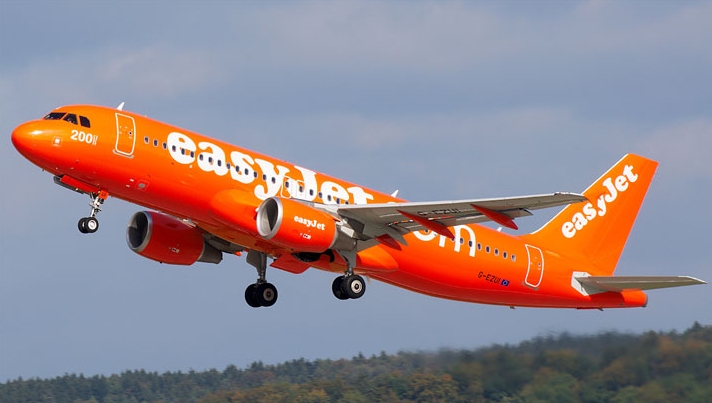The UK's largest airline has unveiled plans to develop a hybrid plane featuring a hydrogen fuel cell which could save around 50,000 tonnes of fuel a year.
Easyjet's concept plane utilises a hydrogen fuel cell stowed in the aircraft's hold which captures energy when the aircraft brakes on landing – much like the Kinetic Energy Recovery System (KERS) found in Formula 1 cars. This energy is then used to charge the system’s lightweight batteries.
The resulting power would most likely be used for taxiing, which accounts for 4% of Easyjet’s total fuel consumption. Easyjet aircraft average 20 minutes of taxi time per flight – the equivalent of around four million miles a year.
The only waste product of the system is fresh clean water which could be used to refill the aircraft’s water system throughout the flight. The airline said it will trial the technology later this year.
Easyjet head of Engineering Ian Davies said: “At Easyjet, we are continuing to apply the use of new digital and engineering technologies across the airline.
“The hybrid plane concept we are announcing today is both a vision of the future and a challenge to our partners and suppliers to continue to push the boundaries towards reducing our carbon emissions."

Future of flight
The hybrid concept was reportedly inspired by students at Cranfield University who were asked to develop ideas for what air travel might look like in 20 years’ time, as part of a competition to celebrate easyJet’s 20th birthday in November 2015.
Cranfield University aeronautics lecturer Craig Lawson said: "Our students have showcased some exciting ideas for the 2035 vision of the airline industry through The Future of Flight competition, presenting environmental solutions, operational improvements and ideas to enhance the customer experience. We’re looking forward to developing this concept further.”
Easyjet and Cranfield University signed a three-year strategic partnership agreement last year to share innovation and knowledge.
Easyjet has set new emissions targets for 2020 which will see a reduction of 7% over the next five years compared to its emissions today, which are 81.05 grams CO2 per passenger kilometre.
By filling a high percentage of its seats, an Easyjet passenger has a carbon footprint 22% lower than a passenger on a traditional airline, flying the same aircraft on the same route.
Climbing emissions
The emissions of the world’s aviation and shipping sectors have come under the microscope in recent weeks, after they were both left out of the Paris agreement despite accounting for around 6% of global emissions.
A recent report from the New Climate Economy projects that these emissions could rise 250% by 2050 without tangible targets from governments to reduce carbon rates.
To help keep the cap on this growth, the European Commission published the first European Aviation Environmental Report last week. That report includes key performance indicators on noise, greenhouse gas emissions and air pollution and is intended to track the sector and hold it to account on environmental issues.
However, the inital findings of the report also projected an uptick in emissions without concerted action.
Hans Bruyninckx, the executive director of the European Environment Agency, said: “It is clear that Europe’s aviation sector has an increasing impact on our health and environment. While aviation plays an important economic and social role, its increasing popularity will lead to higher greenhouse gas emissions, air pollution and noise. These are key challenges Europe’s aviation experts and policy makers need to address to create a more sustainable sector.”
Edie.net
